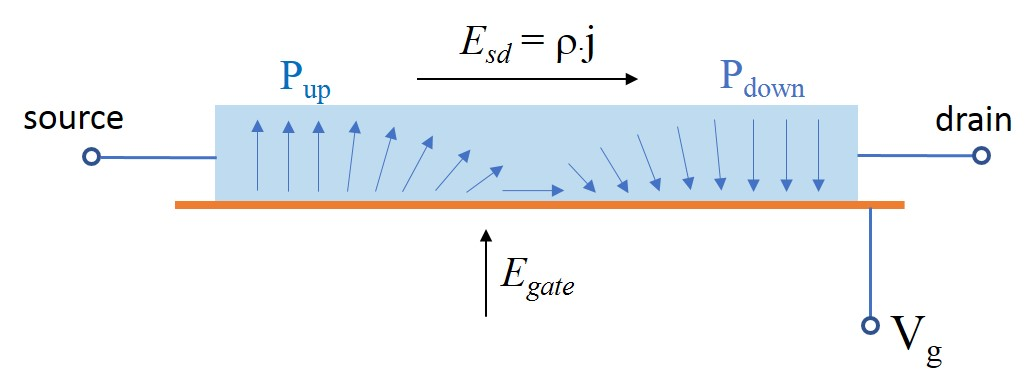
 Home Home |
 For authors For authors |
 Submission status Submission status |
 Current Current
|
 Archive Archive
|
 Archive
(English) Archive
(English)
|
 Search Search |
Ferroelectric properties of different chalcogenides are of great interest due to the underlying physics and potential applications. Recently, three-dimensional WTe2 single crystals were found to demonstrate coexistence of metallic conductivity and ferroelectricity at room temperature. The latter usually belongs to the insulators, but it occurs in WTe2 due to the strong anisotropy of the non-centrosymmetric crystal structure. Out-of-plane spontaneous polarization of ferroelectric domains was found to be bistable, it can be affected by high external electric field.
Scattering of the charge carriers on the domain walls is known to provide noticeable contribution to the sample resistance. Thus, coexistence of metallic and ferroelectric properties should produce new physical effects for electron transport, and, therefore, it should be important for nanoelectronic applications.
Here, we investigate electron transport along the surface of WTe2 three-dimensional single crystals. We find that non-linear behavior of dV/dI(I) differential resistance is accompanied by slow relaxation process, which originates from the additional polarization current in ferroelectric WTe2 crystal. The possibility to induce polarization current by source-drain field variation is unique for WTe2 , since it is a direct consequence of ferroelectricity and metallic conductivity coexistence.

Schematic diagram of the domain wall region, arrows indicate ferroelectric polarization direction. Due to the coexistence of metallic conductivity and ferroelectricity, there are two possible directions of the external electric fields in our setup. Gate field Egate = Vg/d is directed normally to the WTe2 surface, while source-drain field Esd is parallel to it, being induced by the flowing current Esd = ρj. The achievable values of the fields are too small to align polarization of the whole WTe2 flake, so they mostly affect the domain wall regions. Thus, any variation of the electric fields leads to the additional polarization current. The latter we observe as slow relaxation in dV /dI, since polarization current is connected with lattice deformation in ferroelectrics.
N.N. Orlova, N.S. Ryshkov, A.V. Timonina, N.N. Kolesnikov and E.V. Deviatov
JETP Letters 113, issue 6 (2021)